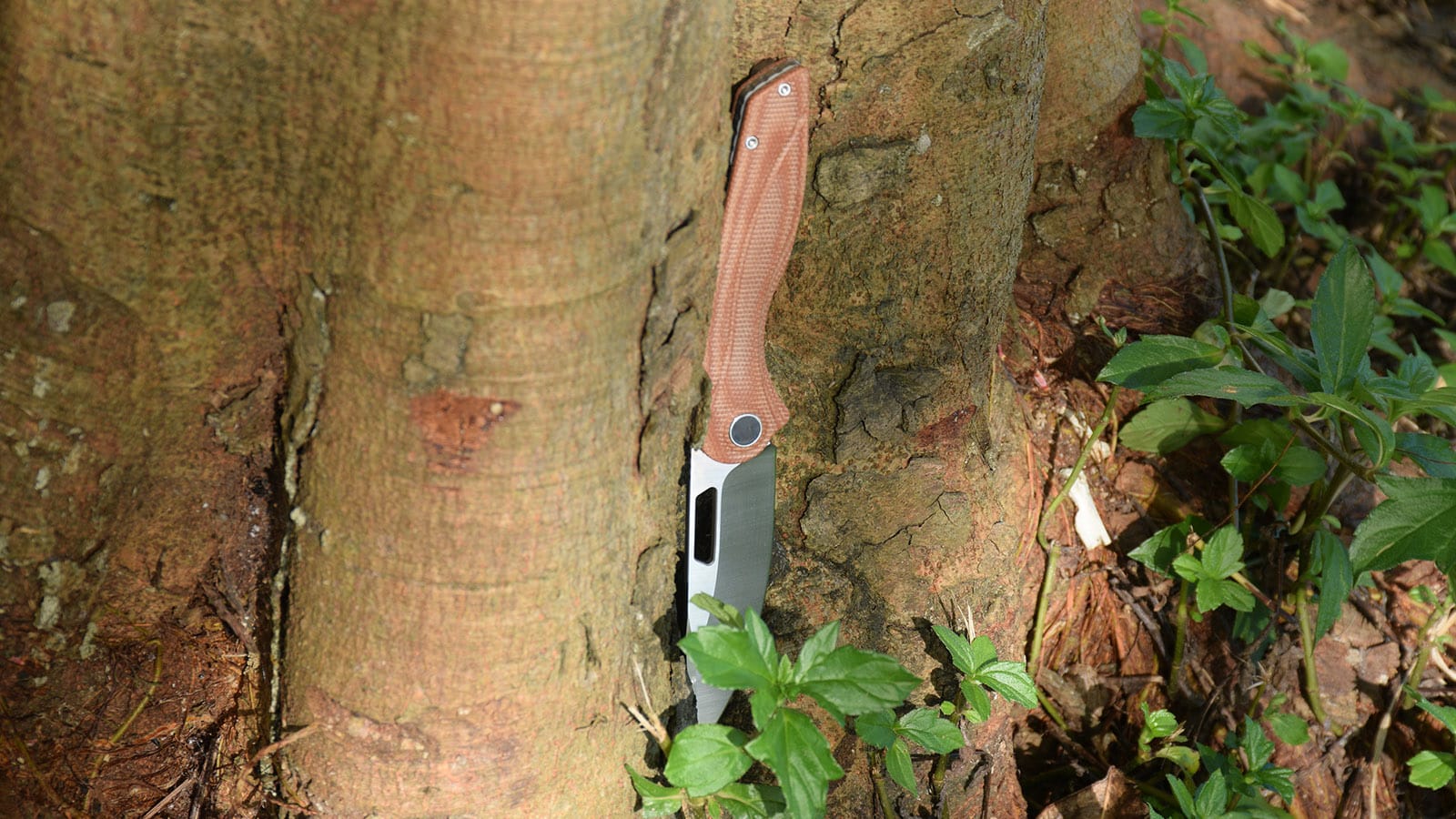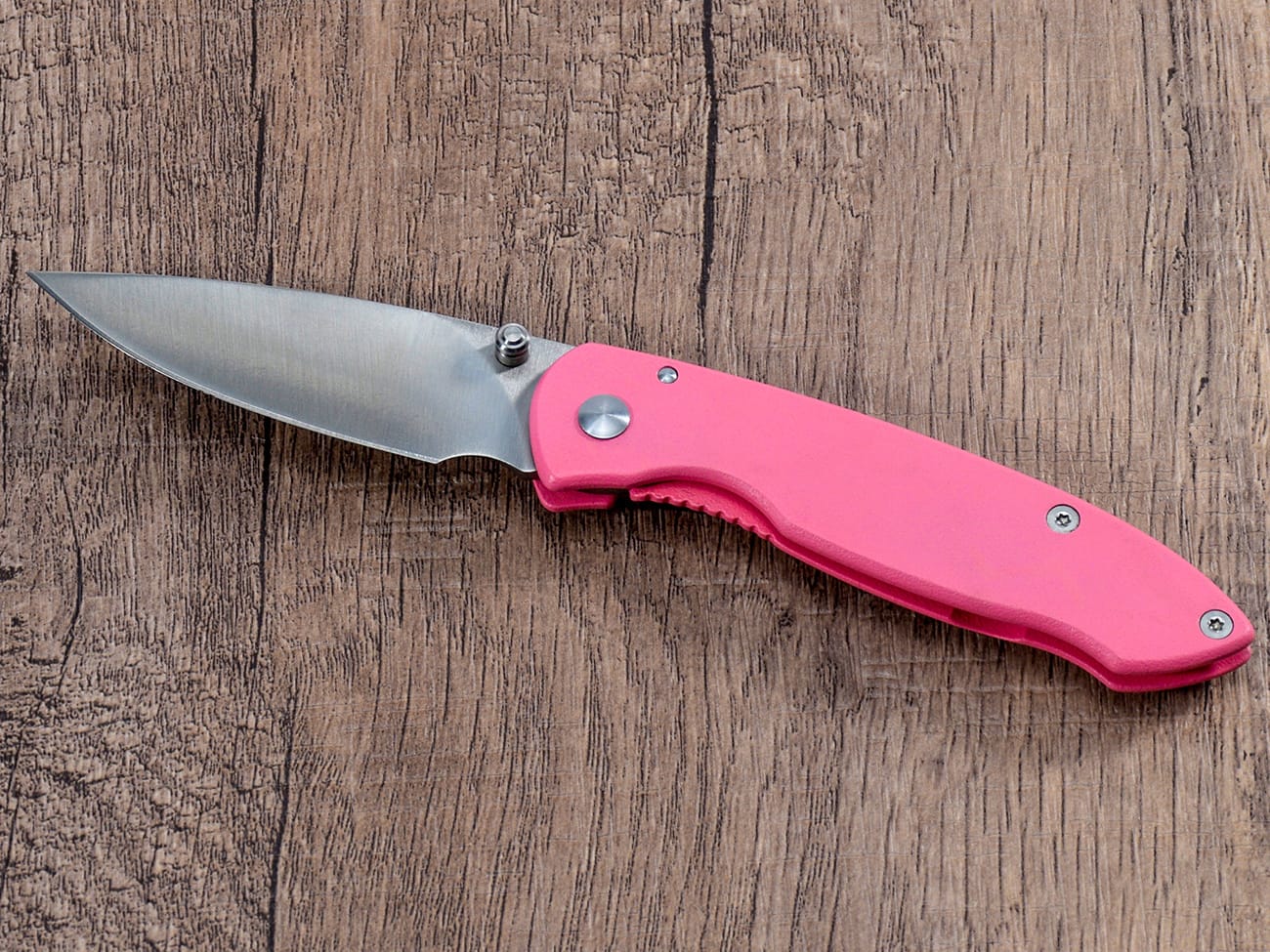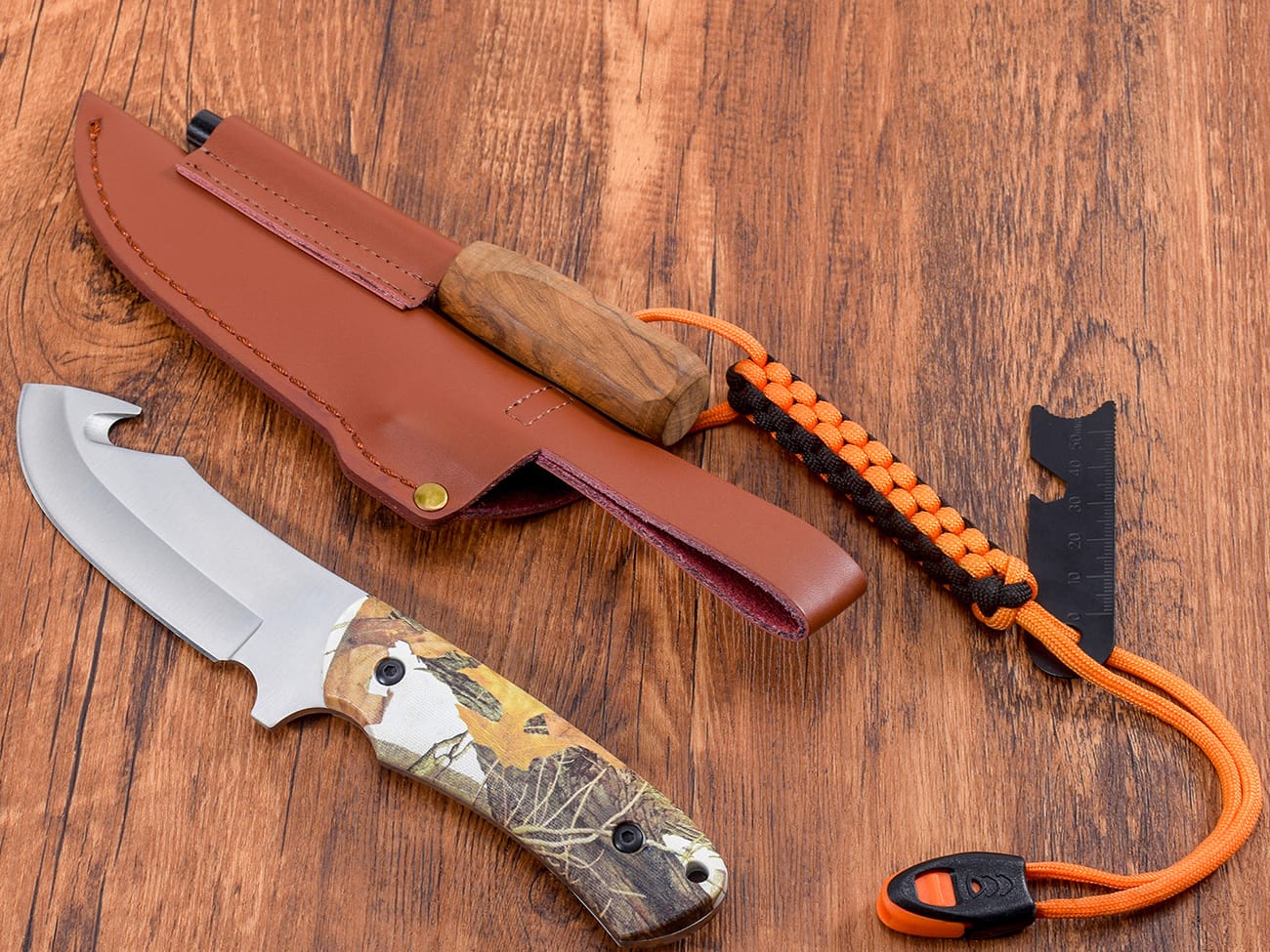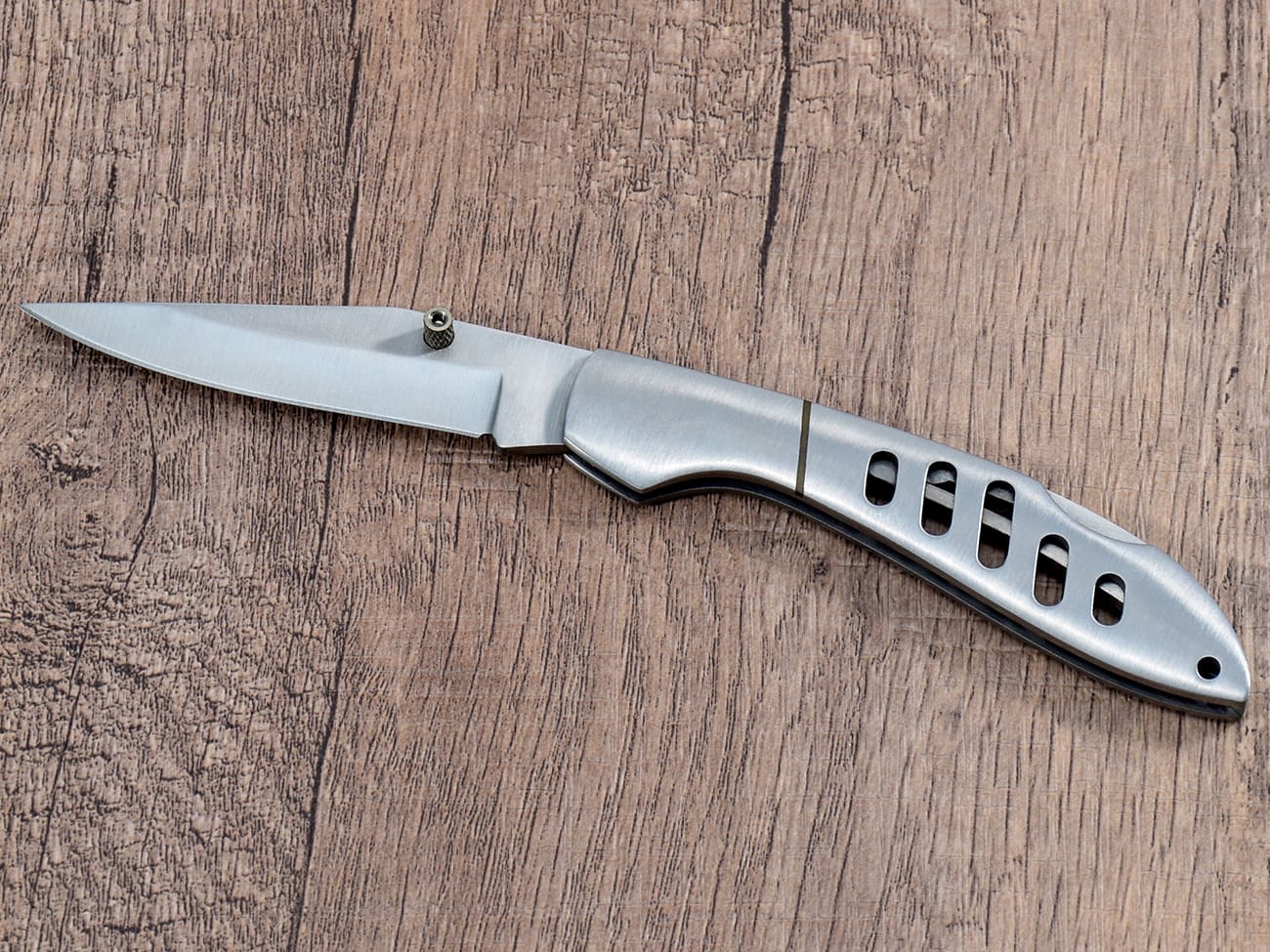Хочете наточити свій кишеньковий ніж, але відчуваєте себе приголомшеними різними варіантами зернистості точильного каменю? Ви не самотні. Багато ентузіастів ножів намагаються визначити ідеальну зернистість для своїх потреб у заточуванні. У цьому вичерпному посібнику ми розвіємо таємницю про точильний камінь і допоможемо вибрати ідеальний для вашого кишенькового ножа. Незалежно від того, новачок ви чи досвідчений професіонал, ця стаття надасть вам знання, які допоможуть зберегти ваше лезо гострим як бритва та готовим до дії.
Розуміння точильного каменю: основа заточування ножів
Перш ніж заглиблюватись у конкретні рекомендації щодо зернистості, важливо зрозуміти, що означає зернистість у контексті точильних каменів. Зернистість відноситься до розміру абразивних частинок на поверхні каменю. Чим менше число зернистості, тим грубіше камінь, а чим вище число, тим дрібніша зернистість.
Що таке точильний камінь і чому це важливо?
Зернистість точильного каменя визначає, наскільки швидко та агресивно камінь видаляє метал з леза вашого ножа. Грубе зерно ідеально підходить для ремонту пошкоджених лез, тоді як дрібне зерно ідеально підходить для хонінгування та полірування. Вибір правильної зернистості є важливим для досягнення бажаної гостроти та якості країв.
Спектр зернистості: від грубої до наддрібної
Давайте розглянемо різні діапазони зернистості та їх застосування:
Для чого використовуються крупнозернисті бруски?
Точильні камені з крупним зерном, як правило, від 100 до 400 зернистості, використовуються для важких завдань заточування. Вони ідеально підходять для:
- Ремонт сколів у лезі
- Зміна форми тупого краю
- Видалення іржі або глибоких подряпин
Коли слід використовувати точильні камені середньої зернистості?
Точильні камені середньої зернистості, зазвичай від 800 до 2000 зернистості, є універсальними та чудово підходять для:
- Загальна заточка
- Обробка краю після використання грубого каменю
- Підтримання помірно гострого леза
Які переваги мають дрібнозернисті точильні камені?
Точильні камені дрібної зернистості від 3000 до 8000 ідеально підходять для:
- Відточування гострого краю
- Полірування леза
- Створення гладкого, вишуканого покриття
Вибір правильної зернистості для вашого кишенькового ножа
Тепер, коли ми розуміємо спектр зернистості, давайте зосередимося на виборі ідеальної зернистості для вашого кишенькового ножа.
Яка початкова зернистість найкраща для кишенькового ножа?
Для більшості кишенькових ножів точильний камінь зернистістю 1000 є чудовою відправною точкою. Він забезпечує баланс між видаленням матеріалу та очищенням, що робить його придатним для загального заточування, оскільки вони не залишають найкращого результату, але можуть швидко відновити тупий край.
Як заточити дуже тупий кишеньковий ніж?
Якщо ваш кишеньковий ніж дуже тупий або має незначні пошкодження, почніть із грубого зерна (приблизно 400), щоб змінити форму леза. Потім перейдіть до середньої та дрібної зернистості, щоб очистити та відполірувати лезо.
Чи можна використовувати дрібний камінь на тупому ножі?
Хоча можна використовувати дрібний камінь на тупому ножі, це не рекомендується. Дрібне зерно видаляє менше матеріалу, що робить процес заточування надмірно трудомістким. Почніть з нижчої зернистості та просувайтеся до кращих результатів.
Поетапний процес заточування
Щоб ефективно заточити свій кишеньковий ніж, виконайте такі дії:
- Почніть із середньої зернистості (1000) для загального заточування
- Під час заточування використовуйте правильний кут (зазвичай 15-20 градусів).
- Підтримуйте постійний тиск і погладжування
- Перехід до більш дрібної зернистості (3000-6000) для хонінгування та полірування
- Завершіть лямкою, щоб видалити задирки
Неможливо відобразити зображення
Поширені помилки, яких слід уникати під час використання точильних каменів
Щоб отримати найкращі результати, уникайте цих поширених пасток:
Чому не варто використовувати для фінішної обробки грубу зернистість?
Використання грубого зерна для обробки може залишити ваше лезо грубим, неочищеним краєм. Завжди переходьте до більш дрібної зернистості для гладкої гострої поверхні.
Як використання неправильного кута може вплинути на лезо вашого ножа?
Дотримання правильного кута має вирішальне значення для досягнення гострого краю. Використання неправильного кута може призвести до нерівного скосу або навіть до пошкодження леза. Прагніть до узгодженості та використовуйте напрямну для заточування, якщо потрібно.
Обслуговування вашого Whetstone для оптимальної роботи
Правильний догляд за точильним каменем має важливе значення для тривалої роботи. Ось декілька порад:
- Очищуйте точильний камінь після кожного використання
- Зберігайте його в сухому місці, щоб запобігти розвитку цвілі
- Періодично розрівнюйте камінь, щоб зберегти рівну поверхню
Просунуті прийоми: мульти-зернистість
Для любителів ножів, які хочуть підняти свої навички заточування на наступний рівень, подумайте про використання мультизернистості:
- Почніть із каменю зернистістю 400 для ремонту країв або зміни форми
- Для загального заточування перейдіть до каменю зернистістю 1000
- Перейдіть до каменю зернистістю 3000 для покращення краю
- Завершіть зернистістю 6000 або 8000 для дзеркального полірування
Ця прогресія дозволяє досягти гострого, як бритва, краю з красивою обробкою.
Вибір правильного точильного каменя для ваших потреб
Вибираючи точильний камінь, враховуйте такі фактори, як:
- Типи ножів, які ви будете точити
- Ваш рівень майстерності та частота заточування
- Вимоги до бюджету та довговічності
Складні ножі часто виграють від універсального двостороннього каменю із середньою та дрібною зернистістю.
Роль води в заточуванні точильного каменю
Багато точильних каменів потребують води для оптимальної роботи. Ось чому:
- Вода діє як мастило, зменшуючи тертя
- Допомагає видалити частинки металу під час заточування
- Деякі камені, які називають водяними, потрібно замочувати перед використанням
Завжди дотримуйтесь інструкцій виробника щодо використання води з вашим точильним каменем.
Заточування різних типів кишенькових ножів
Для різних кишенькових ножів можуть знадобитися дещо інші підходи:
Як ви точите зубчасті кишенькові ножі?
Особливої уваги потребують зубчасті ножі. Використовуйте дрібнозернистий камінь або спеціалізований точильний стрижень, щоб зберегти форму та ефективність зубців.
Як найкраще точити японські кишенькові ножі?
Японські ножі часто мають більш гострий кут леза. Використовуйте більш дрібну зернистість (3000-8000) і зберігайте постійний кут для найкращих результатів, коли заточування японських ножів.

Висновок: опанування мистецтва заточування точильного каменю
Вибір правильного точильного каменя для вашого кишенькового ножа є важливим кроком у збереженні його гостроти та довговічності. Розуміючи спектр зернистості та дотримуючись належних методів заточування, ви можете підтримувати своє лезо у відмінному стані. Пам’ятайте, практика робить досконалим, тож не бійтеся експериментувати з різними видами крупинки та техніками, щоб знайти те, що найкраще підходить для вас і ваших кишеньковий ніж.Ключові висновки:
- Почніть з точильного каменя зернистістю 1000 для загального заточування
- Використовуйте грубішу зернистість (400) для тупих або пошкоджених лез
- Перехід до більш дрібної зернистості (3000-8000) для хонінгування та полірування
- Дотримуйтеся правильного кута та постійного тиску під час заточування
- Доглядайте за своїм точильним каменем, щоб забезпечити його довговічність і ефективність
- Розгляньте прогресію з кількома зернами для покращених результатів заточування
Завдяки цим порадам і прийомам ви будете на шляху до оволодіння мистецтвом заточування бруска для свого кишенькового ножа. Вдалого заточування!




